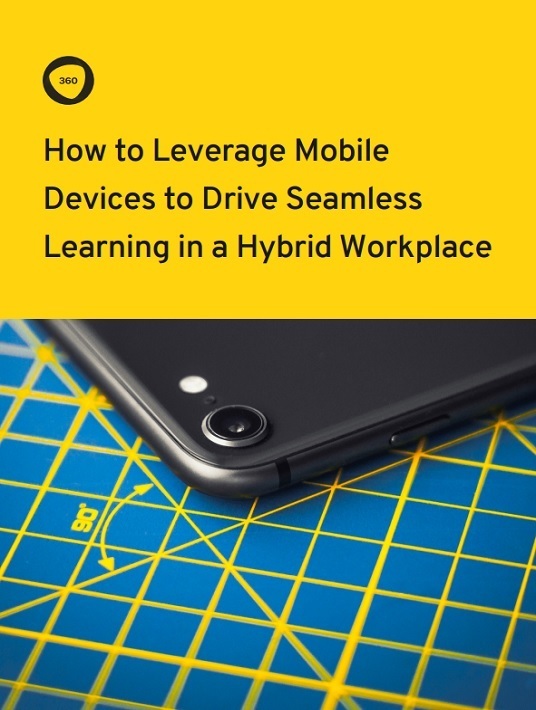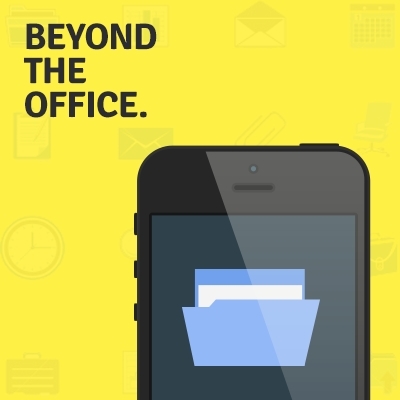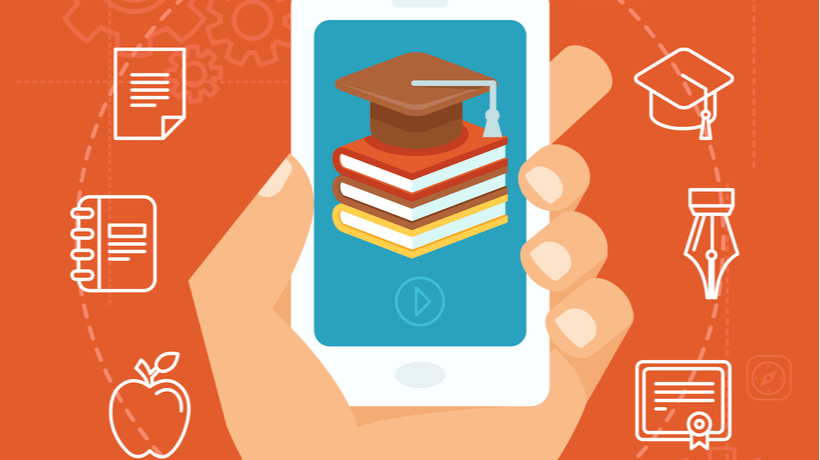Exploring The Use Of Mobile Learning In The Workplace
150 – that’s the average amount of times we look at our phone each day[1]. It’s clear that this device has become an integral part of our daily activities, within our reach wherever we go to make our lives easier. Data on the unprecedented expansion of mobile use worldwide only confirms this.

A definition of mobile learning:
Any learning and/or training experience that is not limited to a given location or specific timeframe and that is completed using a smartphone or tablet.
Faced with the explosion of mobile use, many actors have moved the needle on the mobile revolution and have developed new offers and applications that are able to meet the increasingly fierce appetite of nomad users. Indeed, mobile Internet users have great expectations: “50% of mobile internet users expect their smartphones to give them exactly what they want and to meet their immediate needs[2]”, mentions Julie Ask, mobile researcher at Forrester Research.
New mobile uses constitute an unparalleled business challenge: the device has our full attention and we interact with it all day long, no matter where we are. Therefore, it offers plenty of “available human brain time” compared to that of television, to quote Patrick Le Lay, former CEO of TF1. It also introduces new uses: push notifications, mobile video streaming, and geo-targeting are just some examples. In this way, application development has turned into a real market whose revenues, mainly linked to advertising investments, are ever-growing.
To seize this opportunity, some companies have developed applications whose services come with specific and mobile-friendly user experiences. The most popular example is probably Uber, who revolutionized the market of transportation and created new remuneration models while transforming our relation to time: in just one click, we can order a car and driver that perfectly meet our needs instantaneously, whenever and wherever we are.
We could also mention the world’s most used application: Google Maps has changed our relation to time by giving us the possibility to determine our location and calculate our directions in one second[3].
These mobile applications have changed our relation to time and space and have allowed the emergence of new services and user behaviors which were impossible until now.
When it comes to online advertising, the mobile phone has also become a new playground. By capitalizing on mobile data, targeting possibilities have multiplied tenfold and have been refined, especially thanks to advanced technologies that have paved the way to haptic technology, geo-targeting and Apple’s iBeacon[4]. The iBeacon by Apple, for instance, allows in store geolocation, which means that experience is adapted according to its user’s location.
In using this kind of technology, the Google suite now makes it possible to offer advertising services that target the right person, in the right location and at the right time, all within an appropriate context. By blending location data, purchase history, and user behavior, it provides consumers with context-specific advertisement that maximizes marketing performance while providing consumers with adverts that focus on their needs.
The field of mobile advertising also comprises many innovations in terms of formats, such as rich media, interactive ads, and Augmented Reality. For example, last year, IKEA launched an application that lets you animate your catalog: when hovering your phone over the desired piece of furniture, the latter appears in 3D. Users can therefore better appreciate the furniture’s design. Users can then film the inside of their home, where they can view the recorded piece of furniture which is displayed on the phone’s screen when aiming the living room. Such a feature would be unthinkable on PCs, hence IKEA’s focus on the tool’s mobility in its marketing strategy[5].
Mobile Learning Initiatives
The concept of mobile learning triggers a genuine and growing interest: an increasing amount of activities are taking place in schools, universities, and companies.
It’s also become a buzzword: it is ever more spoken of in the media and in the training industry. As shown by the Google Trends chart below, the volume of requests related to mobile learning or learning apps is growing strongly. However, there are fewer large-scale initiatives in mobile learning. This field is still a developing one and has not yet reached advanced maturity. Innovations in the mobile advertising and marketing industries are far more edge-cutting and reach far wider audiences than mobile learning innovations.

Volume of Google searches for mobile learning
Let’s outline all mobile learning initiatives that are increasing but still too location-specific and discreet.
Mobile Devices At School
In educational facilities, initiatives remain very local and on too small a scale, as mentioned in UNESCO reports “Turning on Mobile Learning in Europe" and “Mobile Learning for teachers in Europe”, which respectively identified 10 to 15 major mobile learning projects in Europe. It is unfortunate to see that the mobile phone has not yet passed the school gates, partly because it is not integrated into national public strategies – the only way to invest in long-term projects in a sufficient number of schools.
Reasons mentioned by the UNESCO included the prejudices surrounding the mobile phone, often deemed as a device that can lead students to either chat, cheat, or be distracted.
Mobiles For In-Company Training
While the mobile phone is present in a substantial amount of companies, few of those companies have actually deployed a mobile learning strategy. According to a study conducted by the AFINEF (French Association of Digital Education and Training Industries) published in 2015, 60% of companies use the mobile phone as a “tool”, a promising result.
Nonetheless, this figure should be put into perspective with the study performed by the Brandon Hall Group, which argues that 49% of companies that use the mobile phone only do so by using simple web browsers like Chrome or Firefox[6]. The mobile is therefore used to a basic, limited extent, and most companies do not leverage this tool’s potential.
As for eLearning and Learning Management Systems (LMSs), some apps have been developed and demonstrate the emergence of mobile learning initiatives. Most of them bring added value, compared to the simple use of the browser. With that said, many seem to constitute a mere file repository with a very minimal arborescence: PowerPoint presentations, notes, or videos are accessible, although not developed to offer mobile-friendly user experience.
Other applications correspond to the responsive version of LMS platforms available on PC, that is the identical reproduction of content, but adapted to mobile screen resolution. As such, content dissemination tools still have some way to go being fully compatible with mobile devices.
Overall, available mobile features are often limited: they do not allow for much interaction between users and the interfaces are neither ergonomic nor adapted to trending mobile uses. They do not leverage new formats developed for mobile use such as push notifications and new mobile features: geolocation, interactivity, offline mode.
Mobile Learning Apps For The Wider Public
With an entirely different approach, more and more actors are developing mobile apps linked to learning and training, as they offer an experience that is truly adapted to mobile use. These applications are intended for the wider public.
A renowned example is that of Duolinguo, an application specialized in language learning that gathers 10 million users. Duolinguo offers an ergonomic and gamified language learning experience in which users set their own objectives, unblock levels, and win badges according to the level they reach.
The offered experience is fully adapted to mobile use: training sessions are short, a light sound congratulates users for their good answers, users can challenge each other and on-screen push notifications remind them if they have missed a lesson or have yet to complete one. The visual and sensory experience is also adapted: buttons are larger, meaning they can be easily clicked on using the touchscreen, while text is also larger to ensure mobile-friendliness.
Mention may also be made of the Quizup application, which more closely resembles a video game, as its users can challenge each other to real-time “quizzes” with players from around the world. Gathering 33 million users, the latter can play online with worldwide users, find a game that suits their interests thanks to their search history (data analysis), and escalate to higher levels as their performance improves[7].
Other mobile learning activities, more focused on content, are also popular among the wider public, such as the YouTube platform on which millions of tutorials can be viewed, but also the Khan Academy platform.
Here, user experience is clearly mobile-friendly. It triggers interactivity and engagement: a system and game based on points, short content, easy login, and smooth interaction with other learners. One can highlight that these experiences are very different from those offered as part of in-company trainings: they are designed to engage users, as opposed to professional applications.
Final Word
It is rather clear that the mobile phone is not like any other piece of technology; it gives way to new uses and disrupts our relation to the world. Not only has it become a new, privileged space that one can access anywhere and at any time to exchange with others, play, learn, or work, but it has also created new ways for us to interact with our environment, all the while opening the door to unprecedented opportunities. What role will it play when it comes to knowledge transfer, an issue that is central to the development of our civilizations?
If you want to learn more about the use of mobile learning in the workplace, and how you can put this to the benefit of achieving your business goals, download the eBook Mobile Learning – How To Leverage Mobile Learning For Your Training Strategies?.
References:
[1] How Many Times A Day Do You Check Your Phone? Checky Will Tell You.
[2] Great Apps Pay Off, Good Apps Are Not Enough
[3] Top global smartphone apps, who’s in the top 10
[4] Top 10 mobile advertising campaigns of 2015
[5] Dossier applis iPhone : 15 apps de réalité augmentée sur iPhone (2/2)
[6] Brandon Hall Group, High Performance Mobile Learning Maturity Model: Framework of Progress, April 2014
[7] QuizUp, le jeu de questions-réponses qui veut concurrencer Facebook









